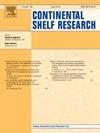Artificial intelligence applications in coastal engineering and its challenges – A review
IF 2.2
3区 地球科学
Q2 OCEANOGRAPHY
引用次数: 0
Abstract
In the late 1980s and early 1990s, the application of Artificial Intelligence (AI) algorithms in coastal engineering began to develop, offering promising solutions to the complexity and variability of coastal environments. While traditional approaches struggle to keep up with the complexity of tackling coastal problems, particularly considering the growing concerns about climate change. In the face of climate change and other increasing natural and manmade concomitances, coastal areas contend with challenges like sea-level rise, sediment transport, water quality problems, coral reef degradation, and other coastal characteristics such as wind and tide. The paper delves into these complexities and how AI presented different techniques in a trial to enhance the predictive abilities that offer early warning systems, enhancing coastal resilience. This paper also shows Deep Learning (DL) and Machine Learning (ML) algorithms showing the different supervised and unsupervised algorithms such as Linear Regression, Long Short-Term Memory (LSTM), Support Vector Machines (SVM) etc. It also critically examines the AI-coastal engineering integration showing its drawback such as the need of more data and its limited transferability. This work also provides an overview of the current landscape of its application in coastal systems enhancing its cost-effectiveness and sustainability and considering ethical and privacy concerns.
人工智能在海岸工程中的应用及其挑战综述
20世纪80年代末90年代初,人工智能算法在海岸工程中的应用开始发展,为解决海岸环境的复杂性和可变性提供了有希望的解决方案。传统的方法很难跟上解决沿海问题的复杂性,特别是考虑到对气候变化日益增长的担忧。面对气候变化和其他日益增多的自然和人为伴随物,沿海地区面临着海平面上升、沉积物运输、水质问题、珊瑚礁退化以及其他沿海特征(如风和潮汐)等挑战。本文深入研究了这些复杂性,以及人工智能如何在试验中展示不同的技术,以提高提供早期预警系统的预测能力,增强沿海的复原力。本文还展示了深度学习(DL)和机器学习(ML)算法,展示了不同的监督和无监督算法,如线性回归,长短期记忆(LSTM),支持向量机(SVM)等。它还严格审查了人工智能沿海工程集成,显示了其缺点,例如需要更多的数据和有限的可转移性。这项工作还概述了其在沿海系统中的应用现状,提高了其成本效益和可持续性,并考虑了道德和隐私问题。
本文章由计算机程序翻译,如有差异,请以英文原文为准。
求助全文
约1分钟内获得全文
求助全文
来源期刊

Continental Shelf Research
地学-海洋学
CiteScore
4.30
自引率
4.30%
发文量
136
审稿时长
6.1 months
期刊介绍:
Continental Shelf Research publishes articles dealing with the biological, chemical, geological and physical oceanography of the shallow marine environment, from coastal and estuarine waters out to the shelf break. The continental shelf is a critical environment within the land-ocean continuum, and many processes, functions and problems in the continental shelf are driven by terrestrial inputs transported through the rivers and estuaries to the coastal and continental shelf areas. Manuscripts that deal with these topics must make a clear link to the continental shelf. Examples of research areas include:
Physical sedimentology and geomorphology
Geochemistry of the coastal ocean (inorganic and organic)
Marine environment and anthropogenic effects
Interaction of physical dynamics with natural and manmade shoreline features
Benthic, phytoplankton and zooplankton ecology
Coastal water and sediment quality, and ecosystem health
Benthic-pelagic coupling (physical and biogeochemical)
Interactions between physical dynamics (waves, currents, mixing, etc.) and biogeochemical cycles
Estuarine, coastal and shelf sea modelling and process studies.
 求助内容:
求助内容: 应助结果提醒方式:
应助结果提醒方式:


